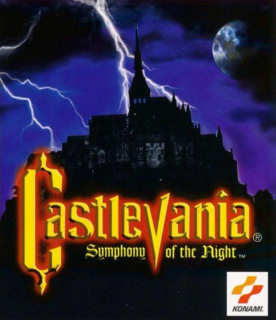Some aesthetic flaws and curious bugs slightly mar this otherwise legendary classic. Purists beware...
We'll start with the good, because there's plenty of it. The game plays like it used to. You engage in free-roaming, side-scrolling combat with hoards of the undead. You have RPG elements, which at the time were nearly revolutionary for the genre, which help you feel like you're actually becoming more powerful as the game wears on. The bosses are gigantic, the enemies are well drawn and animated, many sprites in the game are fluid and complex on a whole other level(did you know Alucard is made up of no less than 8 independent sprites?), the backgrounds fuse 2d and 3d for some (still) really great effects, the music is fantastically composed, covering several genres and still feeling appropriate, and there are secrets abound, from hidden weapon attacks to magical spells activated with Street-Fighter-styled motions. The game broke a lot of ground in the day, and it still serves as an example for why the formula still works 10 years later.
There have been some enhancements made to SOTN to take some advantage of the Xbox 360's power. Achievements have been added to extend the replayability a little(as if SOTN needed it ;) ), the sprites have been smoothened in the enhanced graphics mode, the screen is scalable to accommodate both standard and widescreen televisions, there's no slowdown to be found anywhere, and there are nearly no load-times to speak of. These are all fundamentally good things, but the original game wasn't built with these kinds of enhancements taken into account, and the transition has exposed a few seams.
For starters, while the enhanced graphics exists to help clean up the graphics, they pronounce how pixelated the game was, back in the day. Also, the lack of true widescreen support means, if you don't want the distracting border on your screen, you have to stretch the graphics out of proportion. The lack of loading times, while a good thing, highlights the "CD" hallways, where the game would usually do background loading. They just feel like wasted space, now. Also, as a side-effect, you no longer get to play with the Now Loading screen, which was an amusing throwback. Not a big deal, but it was part of the experience back when. Also, the lack of slowdown has an odd side effect of causing some sound-effect mis-timing, resulting in some goofed-up effects.
If the upgrades were the only things that were goofed up in this version, then I would feel that it was a perfect success. Truth is, that's just the beginning. Originally, Castlevania was pressed on a 700MB CD, and that allowed for some neat-o stuff like CG movies and Redbook CD Audio. Castlevania for the 360 has been compressed to allow for better digital distribution, and that process has certainly had some consequences.
First off, the CG movies are gone. They were just scrapped entirely. Secondly, the audio has taken a big hit. The uncompressed music from the original has been rendered like MP3s, eliminating much of the treble and bass tones from the music. Also, some sound effects are missing, such as the "tumbling bones" effect from red skeletons, and some sound effects are severely compressed, such as the Axe Armor grunts and yells. Most notably, the liberal usage of reverb that characterized nearly all the audio present in the Playstation release, exemplified by opening doors, explosions, rubble landing, the elevator shuttling, character grunts, and countless other memorable effects, is completely neutered. The game almost doesn't sound the same as it used to, and while that might seem like a small thing, SOTN was known for sound as much as anything else.
There are even a few small bugs to make it into the Arcade release. The audio defaults to mono when you begin the game, and any changes you make to the controls through the in-game menu are not reflected in play. The default controls aren't bad by any means, but the inability to change them is quite the oversight, nonetheless.
All in all, and despite my heavy criticism of the more aesthetic issues with the game, it's still a solid, fantastic, worthwhile adventure, and it's still a steal at 800 points (10$ US), so allow me to sum it up:
- If you've never played Castlevania: SOTN before, stop reading right now and go buy it!
- If you're a fan of SOTN and have the urge to play it again, I think it's still worth the money. You'll probably notice the quirks, but it's still the same great game at the core.
- If you're a purist and will accept nothing but perfection, you're better off testing the waters with the demo and deciding from there.

